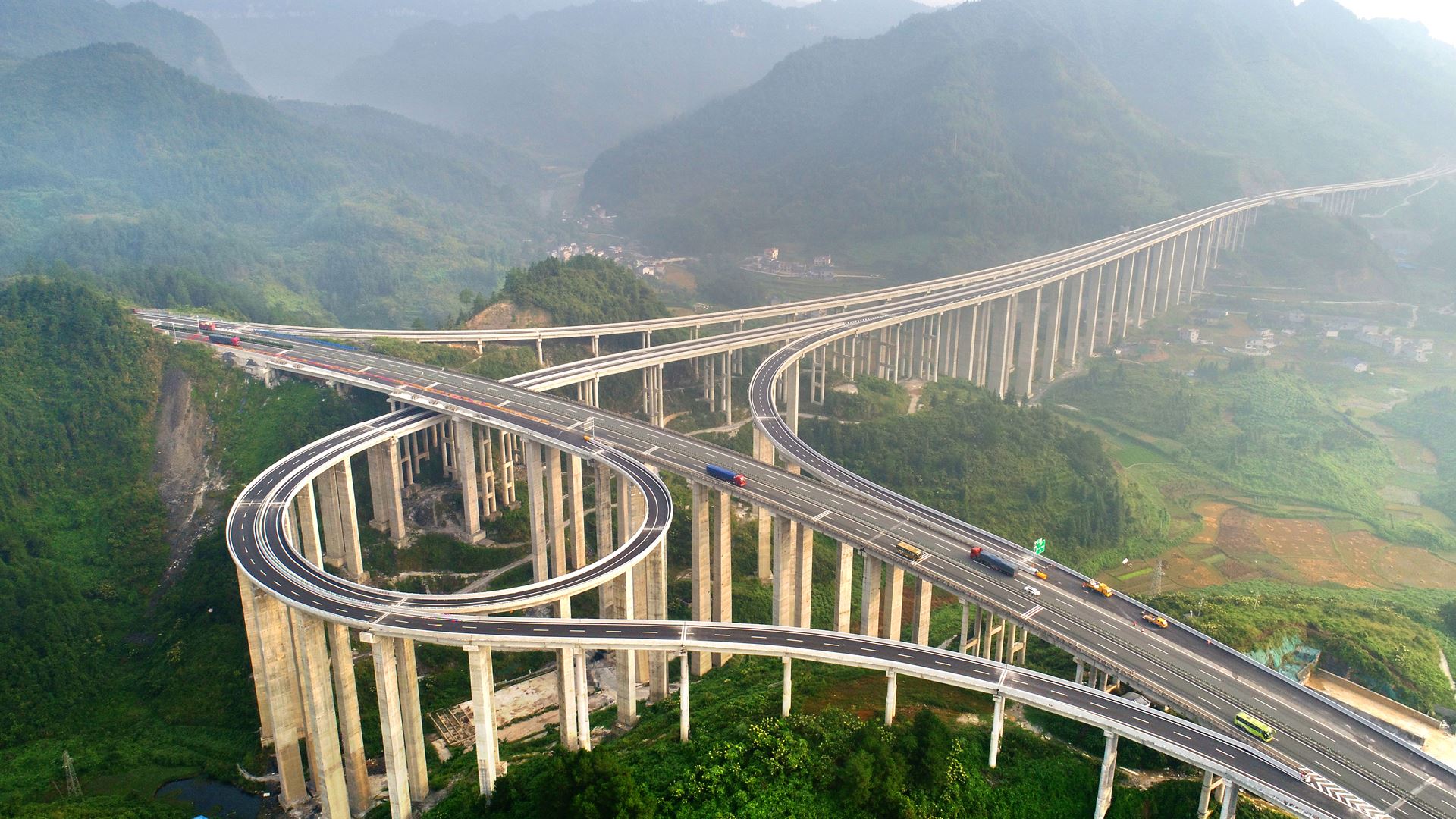Motorways are much more than traffic arteries: they are symbols for freedom, global interconnection, and economic dynamism. They also act as indicators of the local economy and other site factors, reflecting on the attractiveness of entire regions. Moreover, their use by millions of drivers mirrors the level of individual prosperity in a country.
The world’s largest motorway network
When it comes to building motorways, China is second to none. Since the political opening of the country in the early 1970s, the Middle Kingdom has connected its provinces with a network of highways that now spans 160,000 kilometres, with about 8,000 kilometres being added every year. By comparison, Germany's motorway network has grown by 2,000 kilometres since 1995. But when it comes to expanding its transport network, China is not only fast – it is also highly innovative. They are now building “electric roads”, sections of motorway with wireless charging systems for electric vehicles. These will change the way freight is transported, eliminating the need for overhead power lines and heavy batteries. “China has invested a huge amount of money in developing its transport system and, as a rapidly growing industrialised nation, is making faster progress than other countries,” says Kevin Riehl of ETH Zurich, who conducts research at the Institute for Transport Planning and Systems.
“Alongside the US, China has played a key role in driving the technological development of intelligent transport systems and mobility services,” Riehl continues. In fact, Chinese tech giants Baidu, Alibaba, and Tencent are leading the way in digital transport services. With their navigation apps, China is equipping domestic vehicles to make them connected and intelligent.
Every car becomes a sensor
At around 79,000 kilometres, the US Interstate Highway system is the second largest motorway system in the world. Spain, Germany, and France follow with 17,600, 13,200, and 11,000 kilometres respectively. Canada, Japan, Italy, Mexico, and South Korea complete the top ten. In all these countries, modern traffic management is a top priority to avoid congestion. “One thing we know today is that more roads lead to more congestion and are therefore not the answer. What we need are intelligent traffic systems in which every vehicle becomes a sensor. Vehicles will exchange information with each other and so can react better to accidents, jams, or heavy traffic,” says Riehl. Motorways also play a key role in autonomous driving: in addition to innovations for vehicles, the motorway itself is becoming more intelligent thanks to integrated technologies such as sensors in the crash barriers and road surface. Photovoltaic road surfaces are also being used to generate energy for street lighting and electric vehicles. However, due to the high investment costs, this technology is currently only being used on trial sections. Wireless charging allows vehicles to load up on battery power while driving. Heating systems in the road surface melt snow and ice, while dynamic road markings adapt to traffic conditions.
Continue reading the article on Gateway to Automotive:

